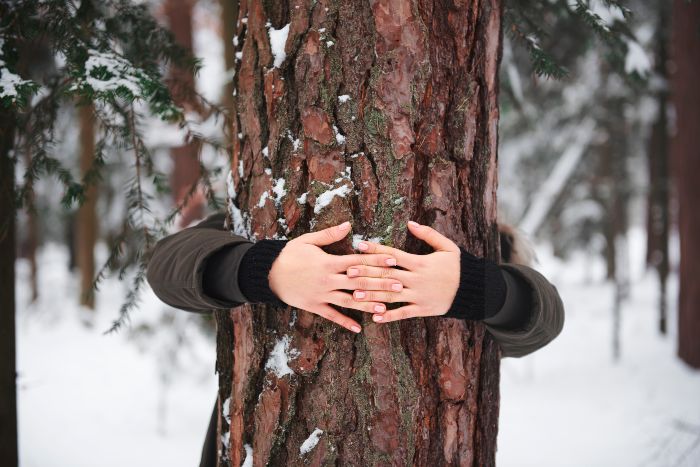The chill of winter brings about dormancy for many trees, a critical period essential for their survival. As temperatures drop, trees strategically slow down their metabolic processes, conserving energy and resources to endure the harsh conditions. However, this dormancy doesn’t render them invincible. The arrival of cold weather creates a set of challenges that can impact the overall health and vitality of trees. In this guide, we explore the common winter dangers trees face and some ways you can help your trees survive the cold months ahead.
Why Do The Colder Months Impact Winter Tree Care So Much?
Although tree growth may slow down in winter, they are still living beings susceptible to damage from the environment and elements around them. The drop in temperature in combination with winter storms can cause branch breakage from the accumulation of ice and snow, as well as the force of gusty winter winds. The freeze-thaw cycles of winter can lead to expansion and contraction of water in the soil and the trees’ cells, damaging roots, bark, and other tissues. Low temperatures can cause desiccation, a process where trees lose more water through their leaves than they can absorb from the frozen ground, resulting in brittle and withered foliage. By understanding these causes for winter tree damage, we can better choose the measures needed to protect trees during the colder months.
Common Winter Tree Dangers
Before we jump into protective measures, let’s identify the adversaries trees encounter during winter. The season poses several threats that can compromise the well-being of your trees. These dangers include sun scald, winter damage to evergreens, root damage, and harm from ice and snow.
Sun Scald
Sun scald, also known as winter sunburn, occurs when the winter sun warms a tree’s bark during the day, only for the temperature to plummet at night. This sudden fluctuation can cause the bark to crack, creating an entry point for disease infection and pest attack. Young, thin-barked trees, such as maples and fruit trees, are particularly susceptible.
Foliar Damage to Evergreens
Evergreen trees face a unique set of challenges during winter because their leaves or needles are retained and still active. The cold, dry winds can lead to desiccation, where the tree loses more water through its leaves than it can absorb from the frozen ground. This results in brown and withered foliage, affecting the tree’s ability to photosynthesize.
Root Damage
Frozen soil poses a threat to a tree’s root system by slowing down root growth or even killing the roots. The formation of ice around the roots can also lead to physical damage. This compromised root system affects the tree’s ability to absorb nutrients and water, weakening its overall health.
Damage from Ice and Snow
Ice and snow accumulation can wreak havoc on tree branches. The weight of these frozen elements can cause limbs to break, leading to irreparable damage. Ice accumulation may also prevent sunlight from reaching the tree, hindering photosynthesis and stunting growth.
Winter Tree Damage Prevention Tips
Now that we’ve identified the potential dangers, let’s explore some tips to safeguard your trees during winter.

Plant Hardy
Before winter arrives, invest in tree species that are well-adapted to colder climates. Hardy trees are better equipped to withstand the challenges presented by winter, including freezing temperatures and potential ice and snow loads.
Mulch
Applying a thick layer of mulch around the base of your trees provides insulation for the roots. Mulch helps regulate soil temperature, preventing rapid fluctuations that can harm the root system. It also acts as a moisture retainer, crucial for trees facing the desiccating effects of winter winds.
Avoid De-Icing Salt
While de-icing salts are effective for clearing walkways, they can be detrimental to trees. These salts, when absorbed by the roots, can disrupt a tree’s water uptake and lead to dehydration. Opt for alternative de-icing methods that are less harmful to your trees.
Water Well
Proper hydration is vital, even in winter, especially for evergreen trees. Before the ground freezes, ensure your trees receive a deep watering. This helps them enter the dormant season adequately hydrated, reducing the risk of winter desiccation.
Stop Fertilizing Six Weeks Before the First Frost
Stop fertilization approximately six weeks before the first expected frost. Fertilizing late in the season can stimulate new growth that may not have sufficient time to harden before winter, making the tree more vulnerable to damage.
Conclusion
Winter brings a unique set of challenges for trees, but by using a proactive approach, you can ensure their well-being even in the coldest months. Keep your trees vigorous with Tree Health Care so they are better equipped to survive the chill of winter!





